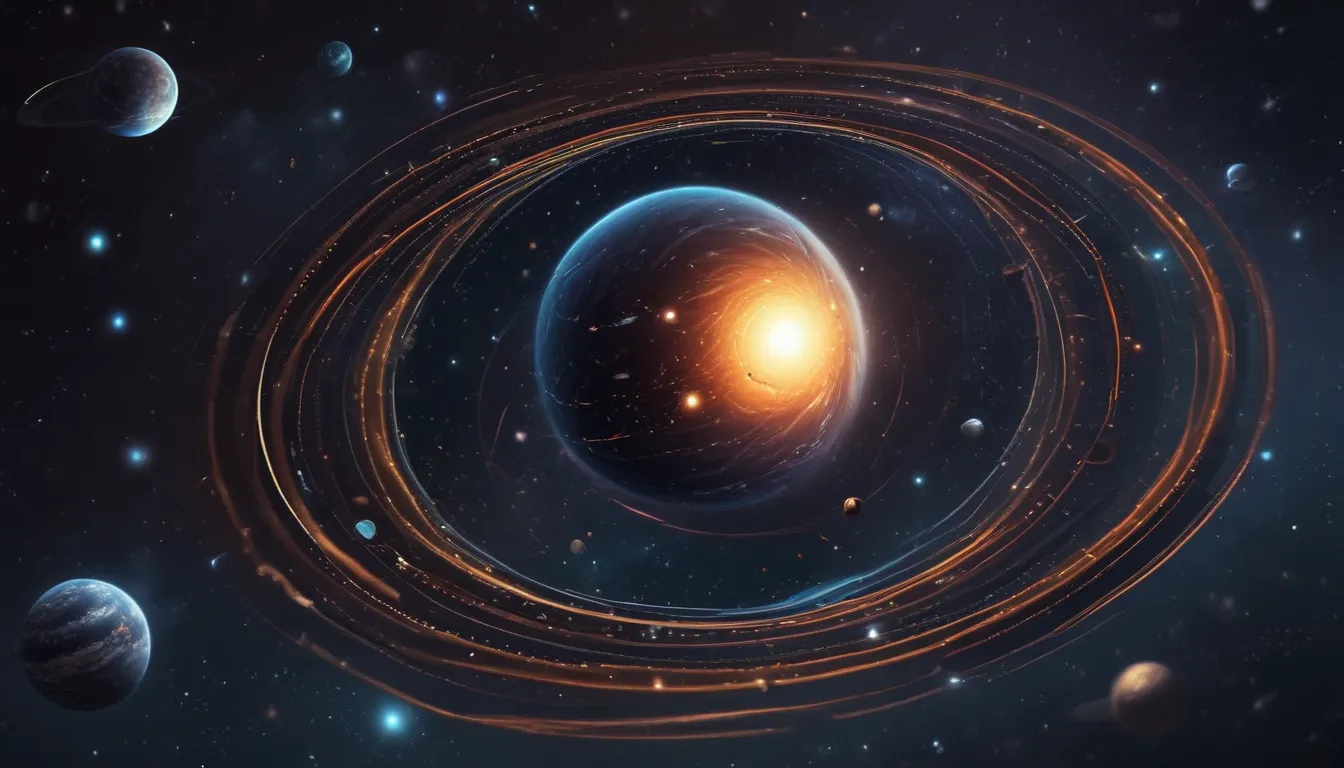The pictures we use in our articles might not show exactly what the words say. We choose these pictures to make you interested in reading more. The pictures work together with the words but don’t take their place. The words still tell you the important facts.
Have you ever wondered how massive objects in space can bend and distort light, creating cosmic magnifying glasses that reveal hidden wonders in the universe? Gravitational lensing is a phenomenon that brings science fiction to life, showcasing the incredible power of gravity to warp our perception of space and time. In this article, we will delve into 19 unbelievable facts about gravitational lensing that will expand your understanding of the cosmos and leave you in awe of the mysteries that lie beyond.
The Fascinating World of Gravitational Lensing
Gravitational lensing is a captivating phenomenon that occurs when the gravitational field of a massive object, such as a galaxy or a black hole, bends the path of light from a distant source. This cosmic lens distorts and magnifies the image of the background object, providing scientists with a unique window into the distant corners of the universe.
-
Gravitational Lenses as Magnifying Glasses: These cosmic lenses act like magnifying glasses, amplifying the light from distant galaxies, dark matter, and even exoplanets. They help scientists study the intricacies of the universe and confirm Einstein's theory of relativity.
-
Mind-Blowing Effects: Gravitational lensing creates stunning visual effects like giant arcs of light, multiple images of the same object, and even time delays. It's nature's own special effects show in the vast expanse of space!
The Science Behind Gravitational Lensing
Albert Einstein’s Prediction
Gravitational lensing was first predicted by the legendary physicist Albert Einstein in his theory of general relativity. Einstein proposed that the presence of matter can curve the fabric of spacetime, causing light to follow curved paths. This groundbreaking prediction has been confirmed through observations of gravitational lensing, solidifying Einstein's legacy in astrophysics.
Types of Gravitational Lensing
There are three main types of gravitational lensing: strong lensing, weak lensing, and microlensing. Strong lensing produces highly distorted images, weak lensing causes subtle distortions, and microlensing refers to temporary light amplification by compact objects passing in front of distant stars.
Captivating Examples
-
Einstein Rings: When the alignment is just right, a perfect ring of light can form around a foreground object, known as an Einstein ring. This rare phenomenon is a testament to the beauty and complexity of gravitational lensing.
-
Giant Arcs of Light: Gravitational lensing can produce elongated arcs or multiple arc segments of light around massive objects, creating visually striking displays in the cosmos.
-
Bullet Cluster: This famous galaxy cluster demonstrates the separation of visible matter and dark matter, providing strong evidence for the existence of dark matter in the universe.
Practical Applications
Gravitational lensing is not just a fascinating cosmic phenomenon; it also has practical applications in astronomy. By acting as a cosmic telescope, gravitational lensing enables astronomers to observe faint and distant objects that would otherwise be beyond the reach of our observatories, opening new avenues for exploration and discovery.
Unlocking the Mysteries of the Universe
As we continue to delve deeper into the mysteries of gravitational lensing, we uncover new insights into the structure, formation, and evolution of the universe. By studying the effects of gravitational lensing, scientists can unravel the secrets of dark matter, test the theories of general relativity, and peer into the early infancy of our cosmos.
Looking to the Future
The study of gravitational lensing holds immense potential for future discoveries and advancements in our understanding of the universe. As our knowledge and technology progress, we can expect to uncover even more astonishing facts and push the boundaries of scientific knowledge to new heights.
FAQs
-
What is gravitational lensing?
Gravitational lensing is a phenomenon where the gravitational field of a massive object bends and magnifies light from a distant source, creating multiple images or elongated light paths. -
How does gravitational lensing occur?
Gravitational lensing occurs due to the warping of spacetime caused by a massive object. As light travels through this curved spacetime, it follows a curved path, resulting in a distorted image of the distant object. -
Why is gravitational lensing important?
Gravitational lensing allows us to study very distant and faint objects, providing valuable information about the distribution of matter in the universe, the nature of dark matter, and helping test Einstein's theory of general relativity. -
Can gravitational lensing be used for practical purposes?
Yes, gravitational lensing has practical applications in astronomy, enabling the study of distant galaxies, measurement of celestial object masses, and aiding in the search for exoplanets. -
What are the types of gravitational lensing?
There are three main types of gravitational lensing: strong lensing, weak lensing, and microlensing, each producing unique effects on the light from distant sources.
As we journey through the wonders of gravitational lensing, we are reminded of the infinite beauty and complexity of our universe. Each discovery and observation deepen our understanding of the cosmos and inspire us to explore further into the unknown realms of space. Join us in this extraordinary adventure of scientific exploration and discovery as we unravel the mysteries of gravitational lensing and unlock the secrets of the universe.






